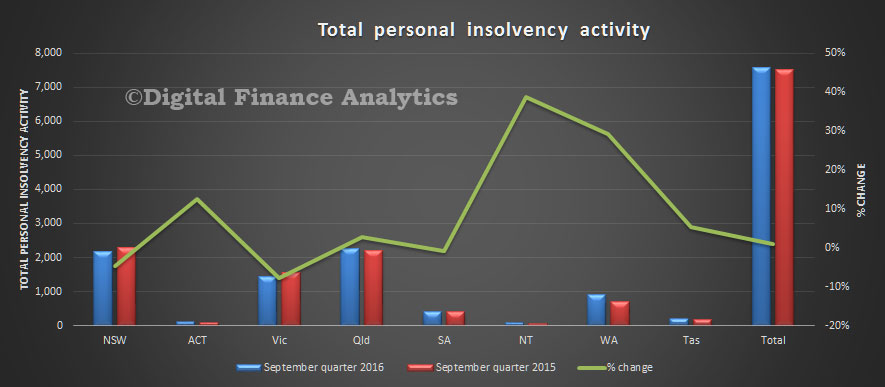The Australian Financial Security Authority today released the personal insolvency activity statistics for the September quarter 2016. Debt agreements reached record highs in Western Australia, South Australia and Northern Territory in the September quarter 2016.
There are three types of personal insolvencies: bankruptcies, debt agreements and personal insolvency agreements. Traditionally, changes in bankruptcies drove changes in total personal insolvencies. However, this has changed in recent years, with debt agreements often driving the change in total personal insolvencies. This is because in recent years, it is common for debt agreements to rise while bankruptcies fall. In the September quarter 2016, debt agreements accounted for 44% of total personal insolvencies. This is the highest proportion since debt agreements commenced in 1997.
Quarterly bankruptcies compared to debt agreements
Personal insolvency in the September quarter 2016
Total personal insolvencies increased by 1.1% in the September quarter 2016 compared to the September quarter 2015. Despite recent rises, the number of personal insolvencies in the September quarter 2016 remains below the peaks reached in 2008-09 and 2009–10.
By type of personal insolvency:
- bankruptcies fell 3.5%
- debt agreements increased by 7.3%
- personal insolvency agreements increased by 18.2%.
Personal insolvency agreements fluctuate more than bankruptcies and debt agreements as the numbers are relatively small.
Debt agreements in the September quarter 2016 are the second highest on record, with 3,307 debt agreements. The highest number of debt agreements was in the June quarter 2016 (3,329 debt agreements).
Debt agreements reached record highs in Western Australia, South Australia and Northern Territory in the September quarter 2016.
Debtors with a business-related personal insolvency
In the September quarter 2016, 18.4% of debtors entered a business related personal insolvency. This is a rise from 17.5% in the June quarter 2016.
In the September quarter 2016:
- economic conditions (483 debtors) was the most common business related cause
- unemployment or loss of income (2,054 debtors) and excessive use of credit (2,047 debtors) were the most common non-business related causes.


